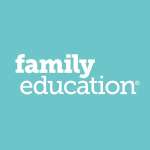Language Arts in Fifth Grade
Language Arts in Fifth Grade
 What Kids Should Already Know
What Kids Should Already Know
As children enter the fifth grade, most are capable enough as readers and writers, and they have also learned to use spoken language successfully. As I pointed out earlier, they are able to use books both for enjoyment and as useful sources of information. They also know how to use a library and are comfortable doing so. They use writing for a variety of purposes; they understand the writing process, including the value of responses from their peers and revisions; and they have a good sense of authorship. They can also use spoken language effectively in a variety of settings -- in discussions, oral reports, plays, explanations, and the like. They understand that language can be used in many different ways.
What Kids Should Learn in Reading
Where reading is concerned, the teacher's main task in grade five -- and throughout the intermediate grades -- is to keep children reading. This means continually enlarging classroom libraries, making extensive use of school and community libraries, referring the children to new books, talking about books, reading to the children from increasingly complex works, and working with librarians and other teachers to organize such events as schoolwide book fairs and author visits for the children.
While some schools have organized the language arts curriculum around American literature in the fifth grade, most teachers believe it is more important to keep children reading many different kinds of literature, as their interests guide them, than to concentrate exclusively on a particular country, genre, or period. Regardless of the geographic focus, if any, the study of literature may be organized around themes. Survival is a popular theme in fifth grade classrooms. When reading is organized around this theme, for example, students will
- read stories of adventure
- be asked to compare and contrast elements of the various accounts they read
- explain similarities and differences
- give their own definitions of such concepts as fear and courage
- write their own survival tales.
What Kids Should Learn About Writing
Writing is closely related to reading. Teachers should make sure that children write every day and that they see themselves as active communicators: writers of journals and letters, authors of poetry, biography, and fiction. Teachers know that writing improves with practice and that writing and thinking are closely intertwined, so they hold daily writing workshops -- periods when children write, revise, and discuss their work. In some schools teachers say that there is not enough time for daily writing workshops. There has to be time!
Writing portfolios that contain files of children's past writing, recently completed works, and writing in progress should be well established by the fifth grade. Viewing this work over time is important to a child's self-evaluation and growth; in addition, the portfolio helps the teacher determine what kind of guidance and assistance each child needs.
Fifth grade children will confidently be writing cursive script rather than printing. They should get a good deal of practice with cursive writing in the course of their studies, although they will also do much of their formal writing -- reports, essays, and the like -- on the computer. Because teachers know that autobiographical and reflective writing is a good means of reinforcing the writing-thinking connection, children are encouraged to keep journals in which they record questions and insights about the various subjects they study as well as personal reflections.
Children will know how to use most of the common writing conventions, including punctuation marks, paragraphing, and verb tenses. They will also know how to write dialogues, explanations, and comparisons, although they may not be equally skilled in all of these types of writing. They should, however, be reasonably familiar with narrative, descriptive writing, explanatory exposition, persuasive writing, business writing, and letters to friends.
What Kids Should Learn About Speaking
The oral aspects of language -- especially effective speaking -- are always important. Teachers view both speaking and listening as closely related to reading and writing. Children are given many opportunities to speak in a variety of contexts: telling and retelling stories, participating in focused discussions about particular topics, sharing information with other children, giving formal speeches, appearing in plays and readers' theater, reading published poems or their own writings aloud.
Children are also encouraged to examine how language is used in the home, the neighborhood, and the media and to develop an understanding of the power of the spoken word. It would be good if all children became anthropologists of language, observing the various ways that different people use words to say hello or good bye, to name things, and to express emotions such as joy and anger. Children should develop an appreciation of dialects and of cultural differences in language use; this will help make them aware of the diversity and flexibility of language.
Reprinted from 101 Educational Conversations with Your 5th Grader by Vito Perrone, published by Chelsea House Publishers.
Copyright 1994 by Chelsea House Publishers, a division of Main Line Book Co. All rights reserved.

